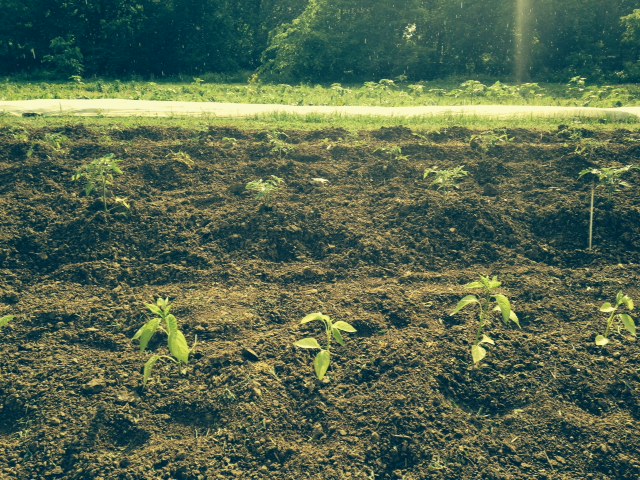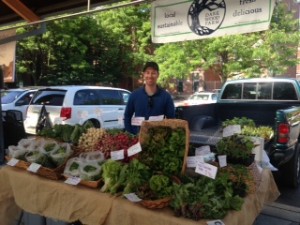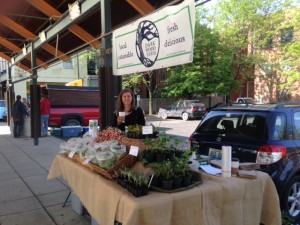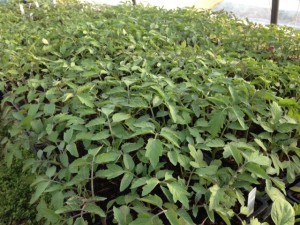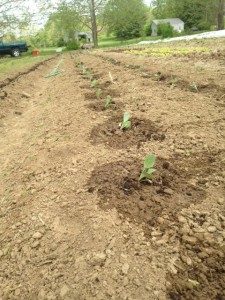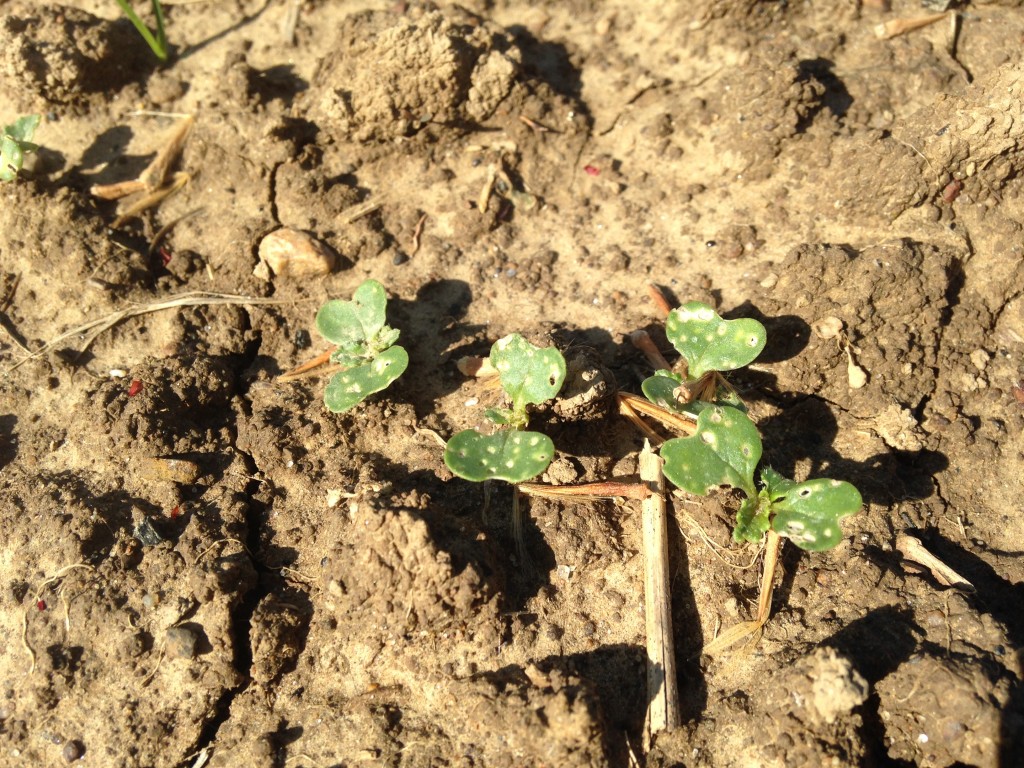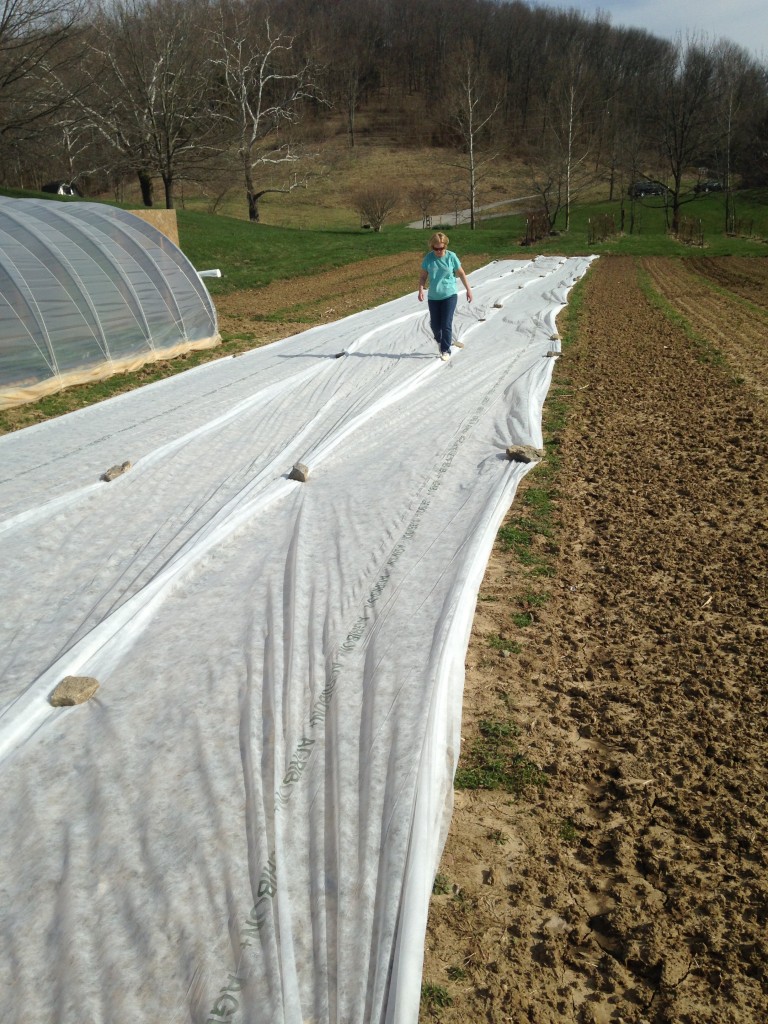Now that June is right around the corner, the farm is transitioning from spring to summer vegetables, and I thought it might be fun to share what we’ve been planting in the ground over the last couple of weeks. Before I go through the list, let me describe the planting process. Some of the vegetables that I grow come straight from seeds planted out in the field. All the wonderful items in the spring salad mix, for example, were planted out as seeds. First I till the ground, then I make a furrow (kind of like a tiny ditch), then I sprinkle seeds along the furrow, cover the seeds up with dirt, and then pray for rain. Seeds need water and they need to be within a favorable temperature range to germinate. Some of my seeds have germinated well, especially all those salad-y things. Other seeds have not, like spinach. Sometimes, germination is helped along by putting fabric row covers over the seeded area because it helps keep the soil more warm and moist. Sometimes this helps the weed seeds germinate too and the new baby weeds choke out the little plants that I want to grow. You win some, you lose some.
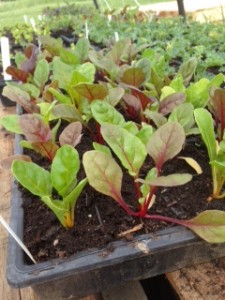
Here’s what baby chard looks like while it’s living in the greenhouse, waiting to be transplanted out to the field.
Transplanted plants, on the other hand, can be planted in the freshly worked ground and will be leaps and bounds ahead of weed seeds. Because they are big, they can also resist insect or other pest damage, which is a plus. The drawback, though, is that transplants need a lot of TLC to get them big enough to put out in the field. You have to sow them as seeds into potting soil in a flat. A lot of growers buy their potting soil, which is often “sterile,” meaning that it is guaranteed to be free from fungal and bacterial diseases. I have chosen not to buy pre-mixed potting soil and have been mixing my own blend of compost, peat moss, dolomite lime (a natural source of calcium and magnesium), and worm castings (that’s right, worm poo). It has taken some tweaking of how much of each ingredient goes into the mix, but I’m pretty happy with the result. I am actually glad that my potting soil isn’t sterile because it helps the plants develop strong immune systems and eliminates any little plants that aren’t going to make it out in that big, dirty, non-sterile world. As a side note, all the ingredients I use come from organic sources, which means I pay higher prices, but I do so willingly because I prefer to use all natural products. Most of the potting soil you buy from the store is not organic because it contains synthetic fertilizers and/or synthetic wetting agents that help keep the soil moist. After the seeds have been sown into potting soil, they get watered on a daily basis and live in the nice, cozy greenhouse environment for anywhere from 4-12 weeks. They often need to get “potted up” or moved into larger containers to have enough space to grow into healthy sized transplants. Once the transplants are ready to go out in the field, I dunk them in water mixed with a tiny amount of organic liquid fertilizer made from kelp and fish. This gives the plants a little bit of nutrients and extra water during the first few days when they experience transplant shock. Each plant gets placed in the ground with some extra compost, and then they are watered in. It’s a time consuming process, but my plants seem happy, so I’m not inclined to change things. Larger farms have machinery that can do the planting, fertilizing, and watering, but my farm is small and I like the fact that each plant passes through my hands on its way from the greenhouse to the soil. It makes me feel a little closer to the plants and helps me to notice the health of each plant.

So, enough of the process, here’s what has been planted over the past two weeks: 5 varieties of cherry tomatoes, 2 varieties of roma tomatoes, 1 variety of sundried tomato, 12 varieties of heirloom tomatoes, 5 varieties of basil, rainbow chard, cumin, nasturtiums, 3 varieties of sunflowers, 3 varieties of bell peppers, 1 variety of Italian pepper, 4 varieties of hot peppers, 1 variety of eggplant, 5 varieties of cucumber, 4 varieties of watermelon, 2 varieties of cantaloupe, 2 varieties of leeks, 1 variety of shallots, and 7 varieties of onions. Needless to say, you’ll find some tired and achy knees and backs on the farm these days, but it feels good to have all of these plants out of the greenhouse and living out in the field. I may have gone a little overboard buying seeds of so many different varieties, but I’m excited to see which ones do the best in the soil and climate here, and also to see which ones have the best flavor. I look forward to bringing all these goodies with me to the market later in the summer and fall, and I hope you’ll come out, give them a try, and let me know which are your favorites.
